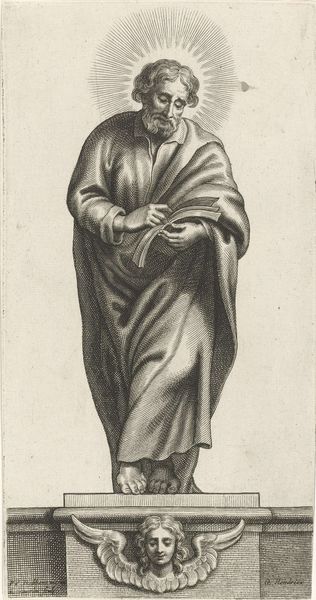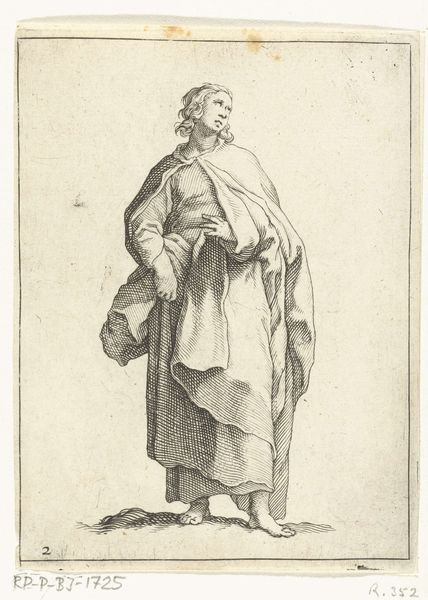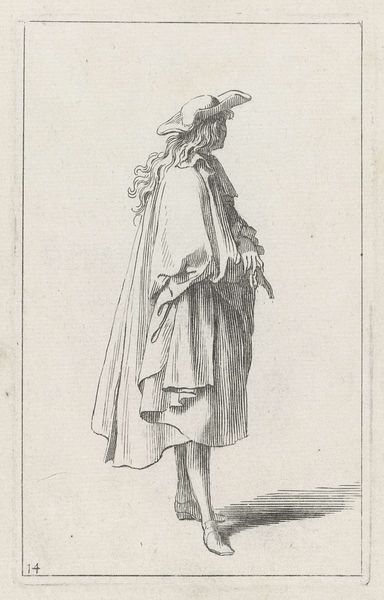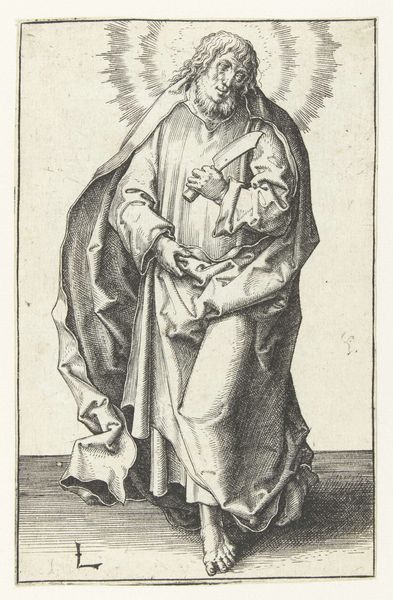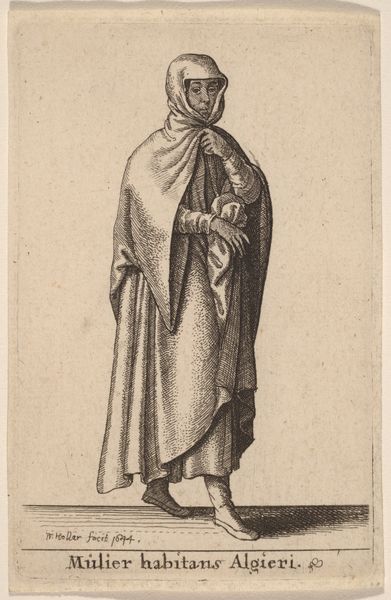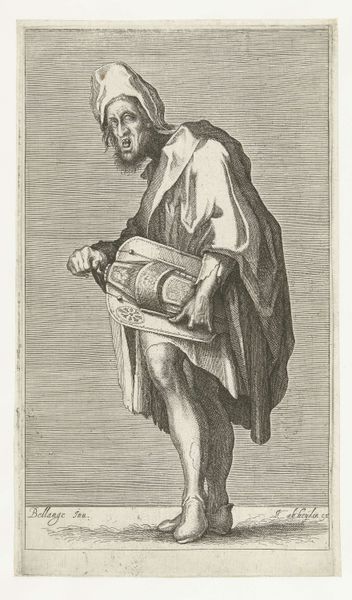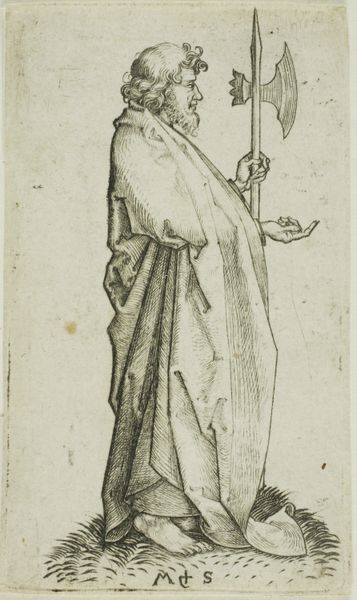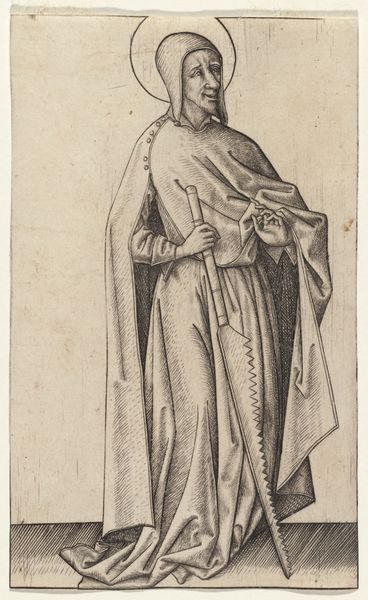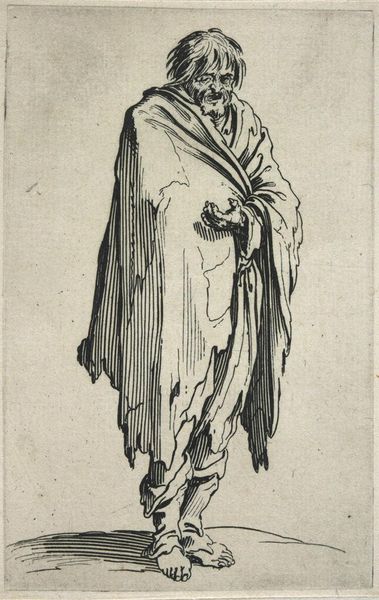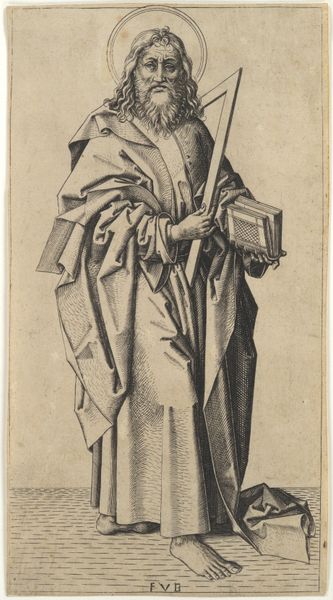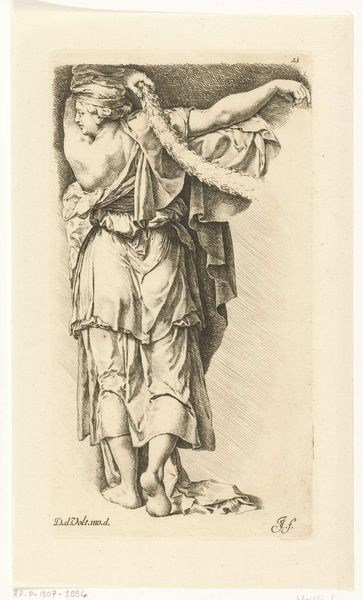
print, engraving
#
portrait
#
medieval
# print
#
figuration
#
northern-renaissance
#
engraving
Dimensions: height 120 mm, width 84 mm
Copyright: Rijks Museum: Open Domain
Editor: So, this is "The Fourth Foolish Virgin," an engraving by Martin Schongauer, made around 1485. It's quite small and intricate. I’m struck by the virgin’s expression – she looks almost…resigned? What’s your read on this piece? Curator: Well, we have to consider this in the context of the late medieval period. Religious imagery was not just about devotional contemplation, it was about conveying very specific social and moral messages. These "foolish virgins," as Schongauer presents them, served a didactic purpose. How would this image be received by different social classes at the time, do you think? Editor: Hmm, I guess the message would be pretty different depending on who you were. For the wealthy, maybe a reminder of their moral obligations? And for the poor... perhaps a message of hope? Curator: Possibly. But it's important to remember the Church's influence and the societal expectations around women. Schongauer is presenting a commentary on the role of women, their piety, and preparation for marriage – the 'bridegroom' being Christ. Note how her lamp appears to be unlit, or empty. Consider the institutional forces that would judge those without means. Editor: That’s a darker interpretation than I initially considered. I was focusing on the individual’s expression. Curator: And that's a valid point, because printmaking also allowed for personal devotion on a smaller scale, in private settings. These images began to shape personal understanding of doctrine. Where did this tension come from between church doctrine and individual devotion? Editor: I suppose there was this gradual shift with the Northern Renaissance, more individual expression while still respecting religious tenets? Curator: Precisely. By understanding this piece within the history of printmaking, the social history of women and religion, and institutional pressures, we move beyond a simple aesthetic appreciation to unpack layered meanings. Editor: Right. I see the foolishness less as a personal failing now, and more as a reflection of larger societal pressures and expectations. Thanks! Curator: Indeed! That is often the beauty of art; a singular work reflects a complex web.
Comments
No comments
Be the first to comment and join the conversation on the ultimate creative platform.
